Tags: madeof:bits
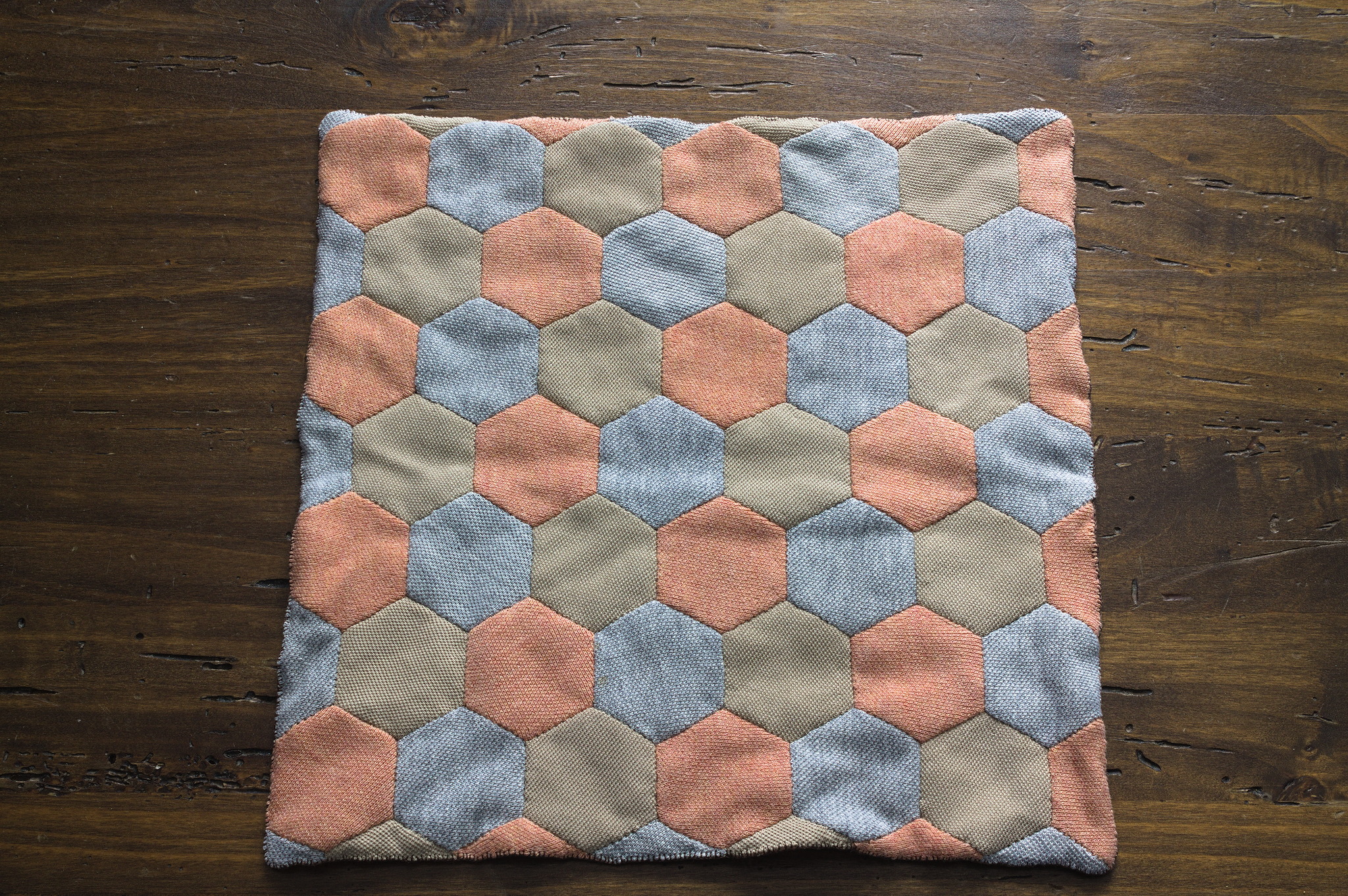
For quite some time, I have been thinking about trying a bit of patchwork, and English Paper Piecing looked like a technique suited to my tastes, with the handsewing involved and the fact of having a paper pattern of sort and everything.
The problem is, most of the scraps of fabric I get from my sewing aren’t really suitable for quilting, with a lot of them being either too black and too thick or too white and too thin.
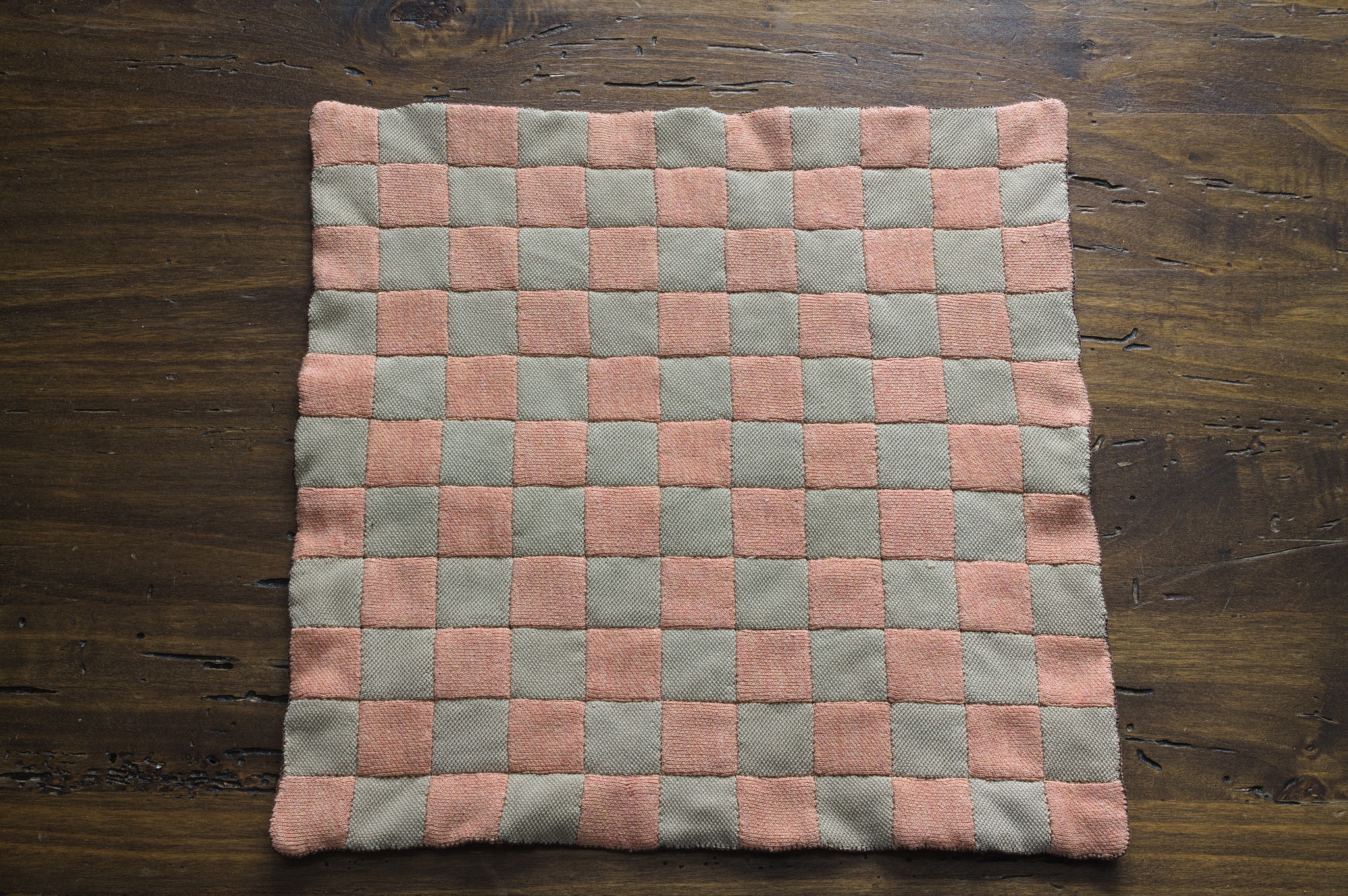
On the other hand, my partner wears polo shirts at work, and while I try to mend the holes that form, after a while the edges get worn, and they just are no longer suitable for the office, even with some creative mending, and they get downgraded to home wear. But then more office shirts need to be bought, and the home ones accumulate, and there is only so much room for polo shirts in the house, and the worst ones end up in my creative reuse pile.
Some parts are worn out and they will end up as cabbage stuffing for things, but some are still in decent enough conditions and could be used as fabric.
But surely, for English Paper Piecing you’d need woven fabric, not knit, even if it’s the dense piqué used in polo shirts, right? Especially if it’s your first attempt at the technique, right?
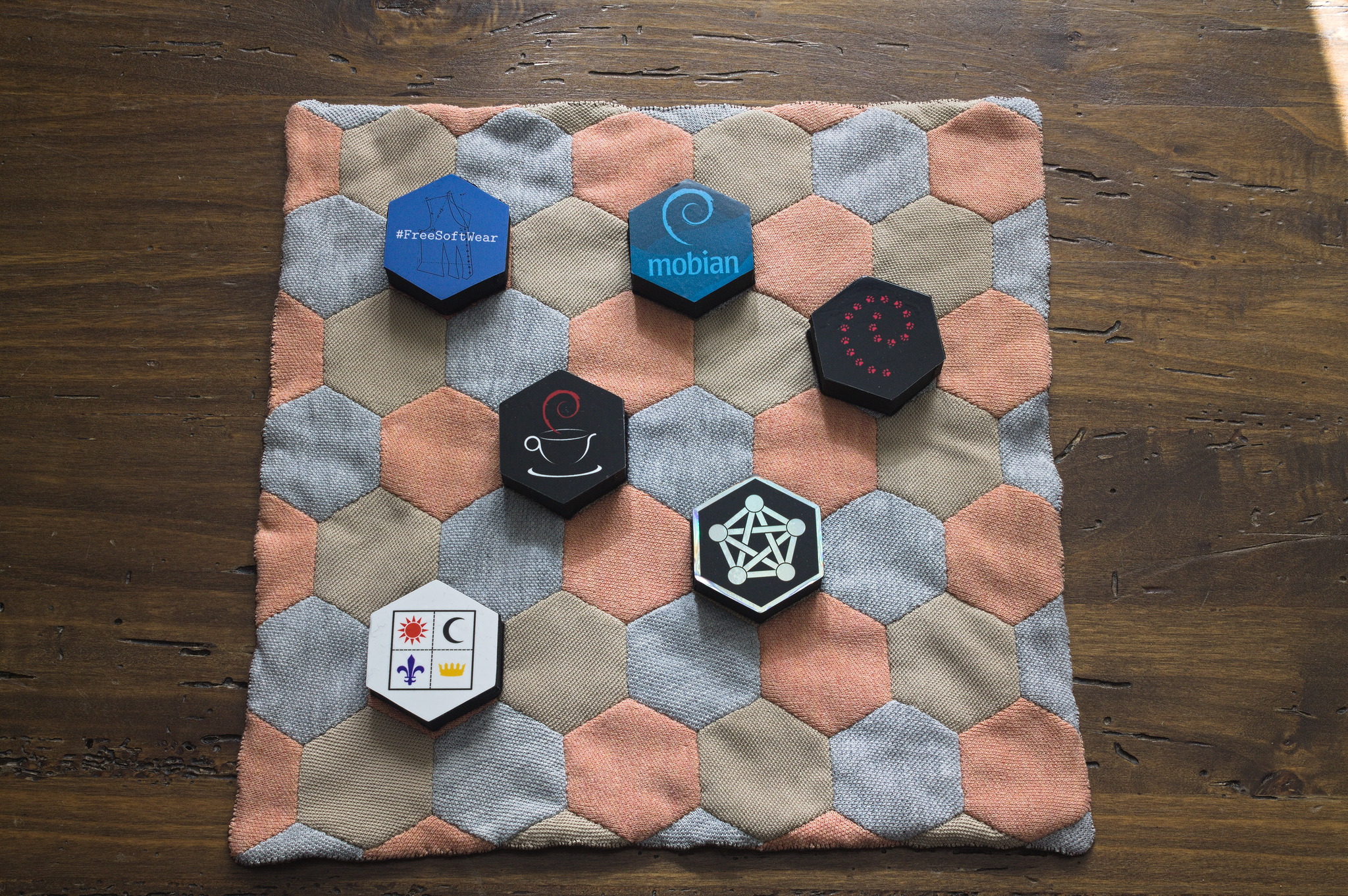
Well, probably it wouldn’t work with complex shapes, but what about some 5-ish cm tall Standard Compliant bestagon? So I printed out some hexagons on thick paper, printed some bigger hexagons with sewing allowance as a cutting aid, found two shirts in the least me colours I could find (and one in grey because it was the best match for the other two) and decided to sacrifice them for the experiment.
And as long as the paper was still in the pieces, the work went nicely, so I persevered while trying to postpone the Moment of Truth.
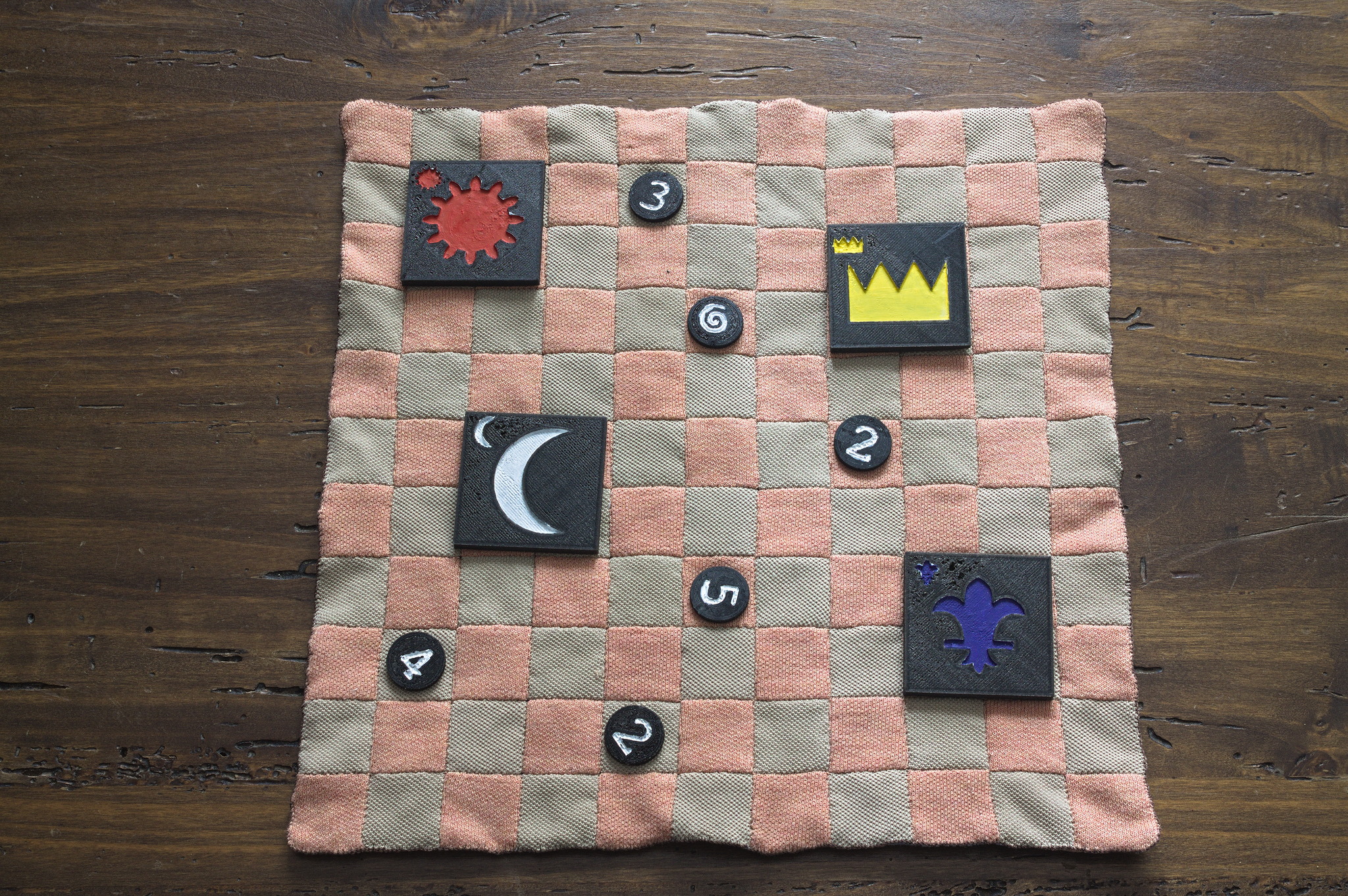
After a while I measured things out and saw that I could squeeze a 6.5 × 7 hexagon pattern into something resembling a square that was a multiple of the 2.5 cm square on the back of my Piecepack tiles, and decided to go for another Standard for the back (because of course I wasn’t going to buy new fabric for lining the work).
I kept the paper in the pieces until both sides were ready, and used it to sew them right sides together, leaving the usual opening in the middle of one side.
Then I pressed, removed the paper, turned everything inside out, pressed again and. It worked!
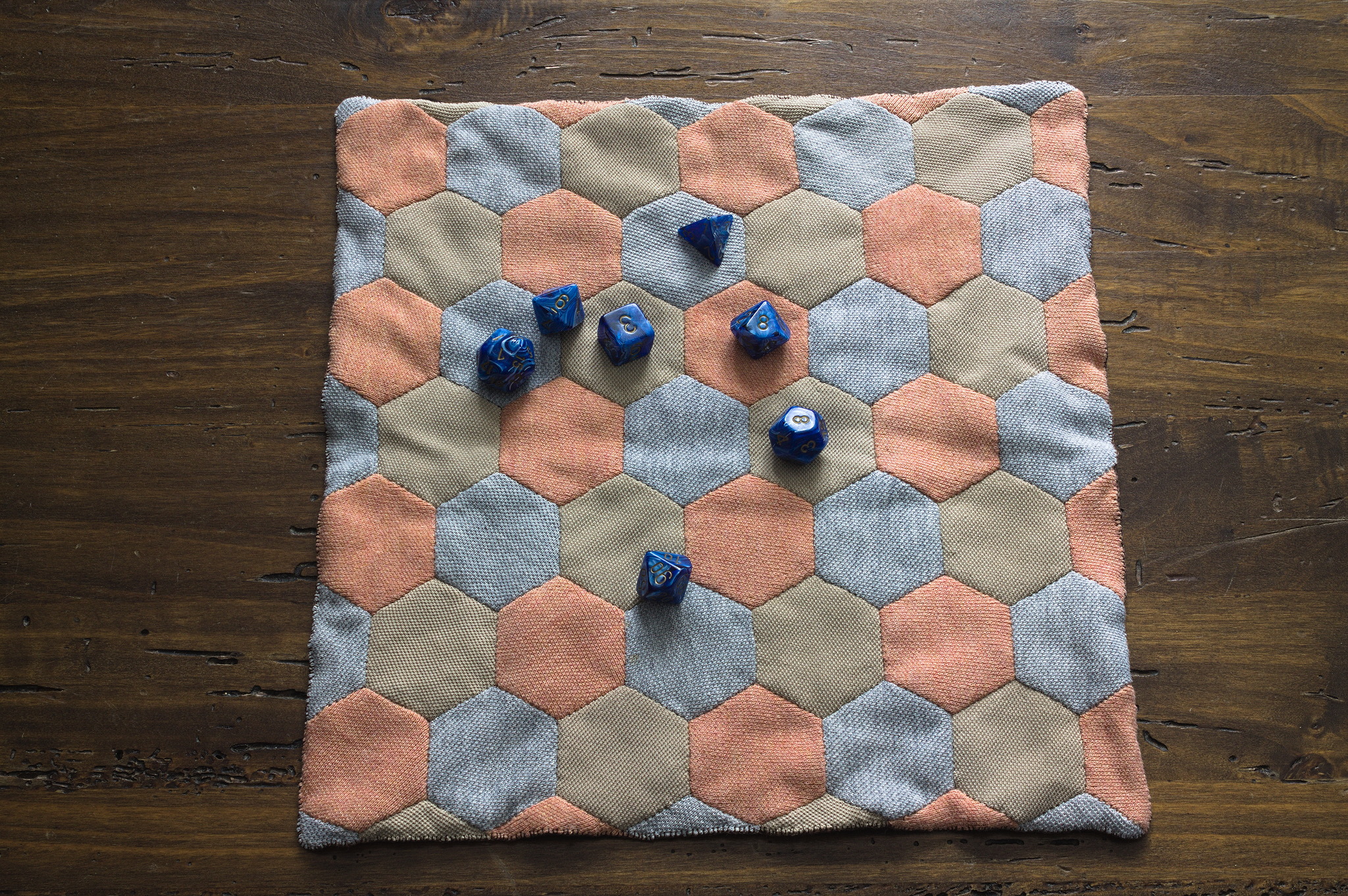
The hexagons look like hexagons, the squares look like squares, the whole thing feels soft and drapey, but structurally sound. And it’s a bit lumpy, but not enough to cause issues when using it as a soft surface to put over a noisy wooden table to throw dice on.
I considered adding some lightweight batting in the middle, but there was really no need for it, and wondered about how to quilt the piece in a way that worked with the patterns on the two sides, but for something this small it wasn’t really required.
However, I decided to add a buttonhole stitch border on all edges, to close the opening I had left and to reinforce especially the small triangles on the hexagons side, as those had a smaller sewing allowance and could use it.
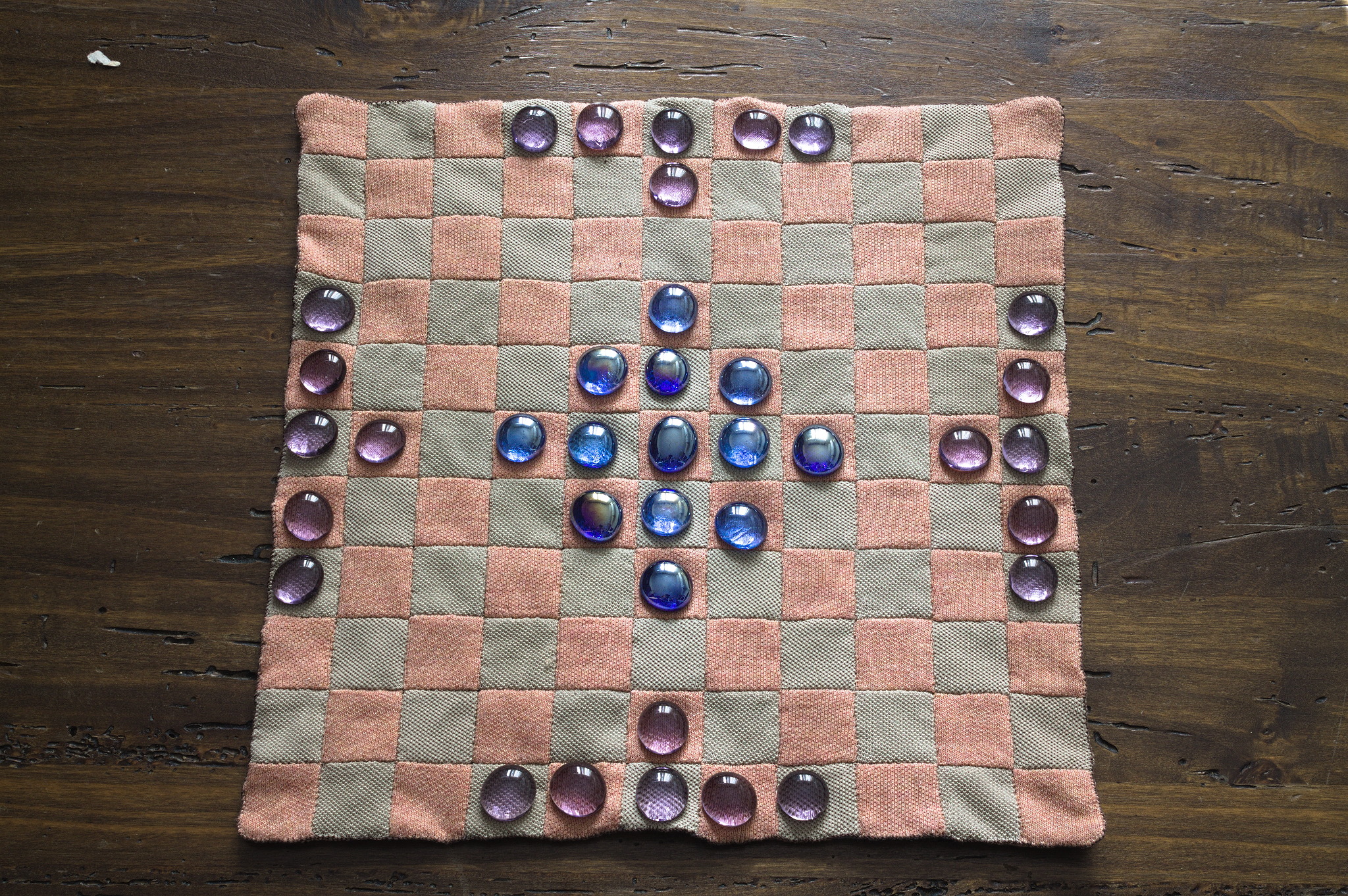
And of course, the 11 × 11 squares side wasn’t completely an accident, but part of A Plan.
For this project there isn’t really a pattern, but I did publish the files I used to print the paper pieces even if they were pretty trivial.
And there are more polo shirts in that pile, and while they won’t be suitable for anything complex, maybe I could try some rhombs, or even kites and darts?